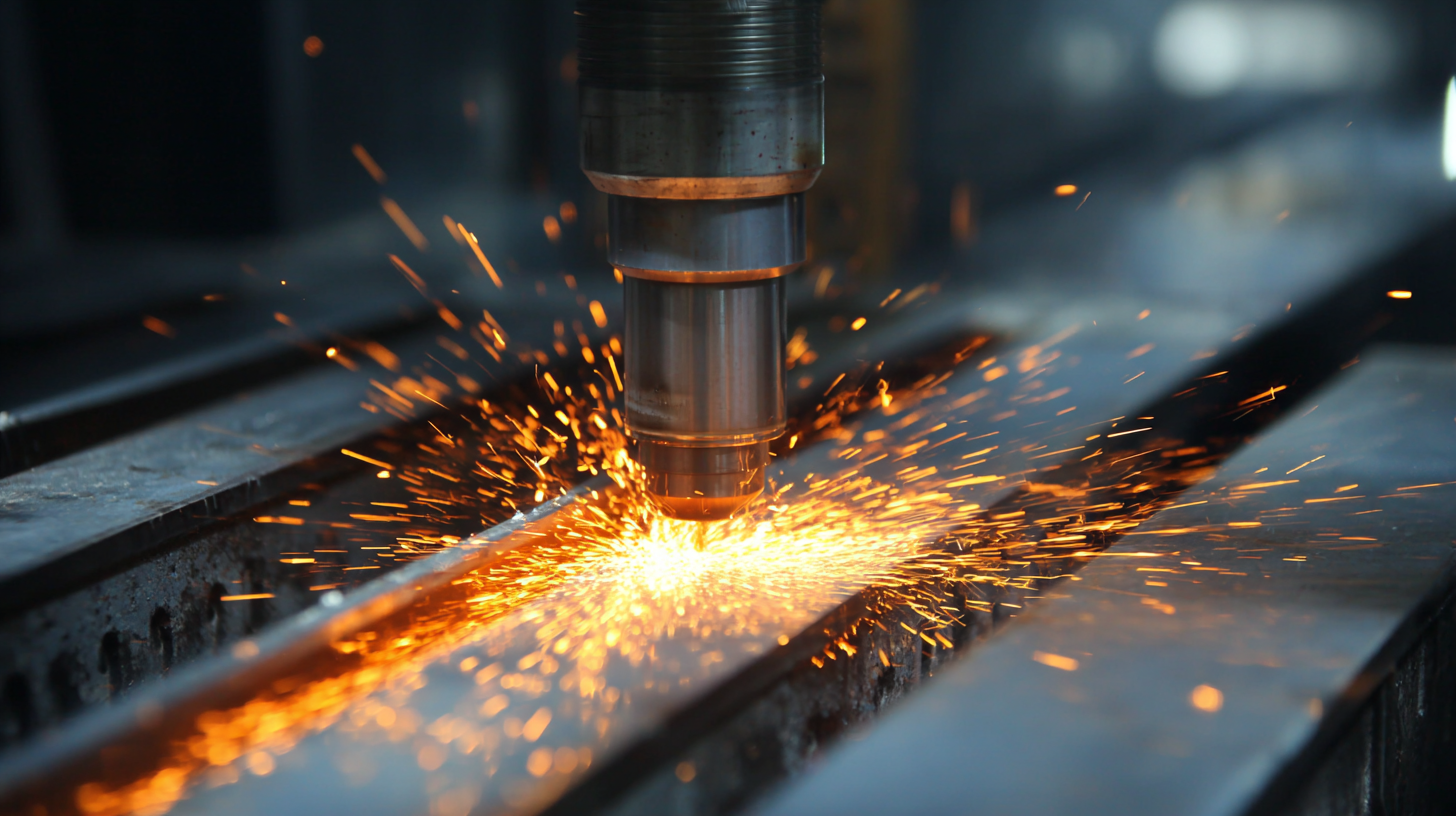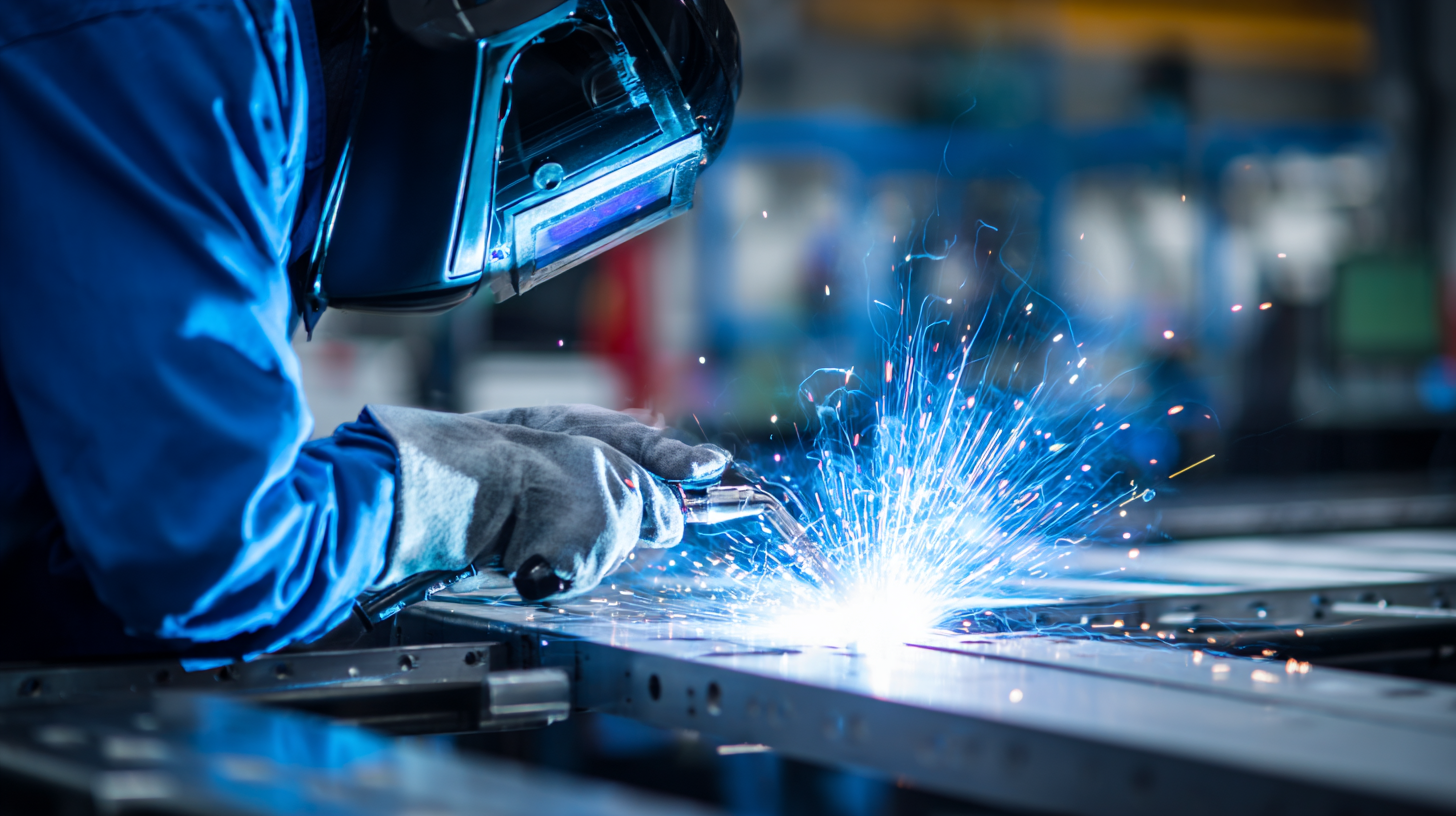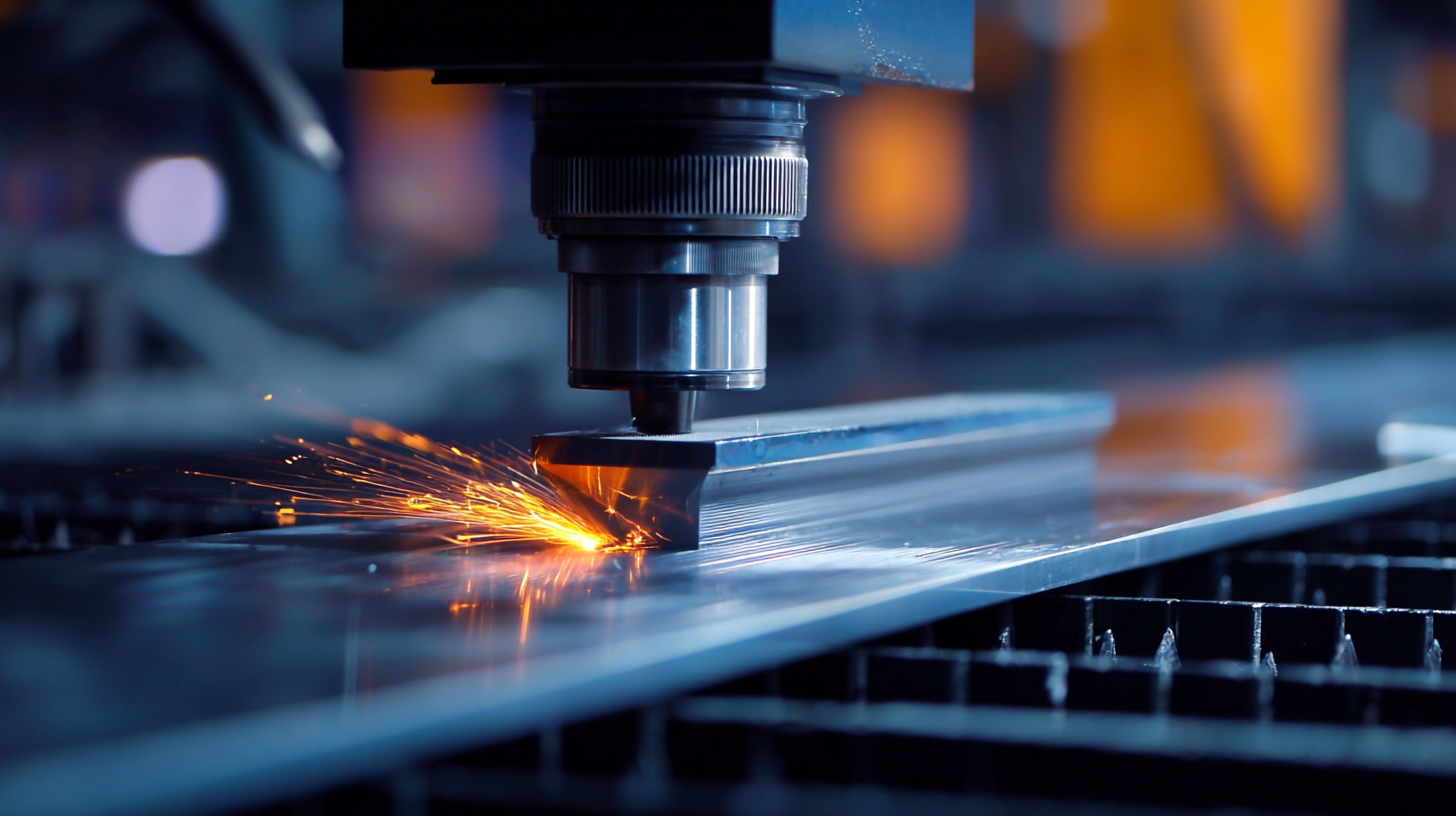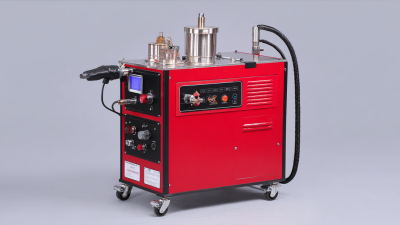Leave Your Message
In the evolving landscape of manufacturing, the integration of advanced technologies is paramount for achieving efficiency and precision. One remarkable innovation making waves in this sector is the Ultrasonic Wire Welder. This cutting-edge tool employs high-frequency ultrasonic vibrations to create strong, reliable welds in various wire products, revolutionizing the way manufacturers approach their production processes. As industries face increasing demands for both quality and speed, the Ultrasonic Wire Welder emerges as a key player, offering significant advantages over traditional methods. Its ability to minimize material waste, reduce energy consumption, and enhance the overall strength of joints positions it as a vital solution in modern manufacturing. As we delve into the implications of this technology, it becomes evident that the Ultrasonic Wire Welder is not just a trend, but a crucial component in the future of efficient manufacturing solutions.

Ultrasonic technology plays a vital role in modern manufacturing processes, offering a range of innovative solutions that enhance efficiency and precision. By utilizing ultrasonic vibrations, manufacturers can achieve improved bonding and cutting processes in various applications. For instance, ultrasonic-assisted machining techniques have been shown to optimize the machining of advanced composite materials, significantly enhancing the surface integrity and performance of aerospace components. This is particularly beneficial in industries where weight and strength are critical, such as aerospace and automotive manufacturing.
Moreover, the integration of ultrasonic technology with advanced manufacturing and digital twin systems promises to revolutionize traditional practices. The ability to monitor and assess processes in real time allows for greater control and optimization of production workflows. This is evident in ultrasonic monitoring systems designed for quality assurance in additive manufacturing, where they ensure that the final products meet stringent performance standards. As industries strive to adopt sustainable production strategies and reduce their environmental footprint, ultrasonic technology stands out as a key enabler of efficient manufacturing solutions tailored to meet the demands of the fourth industrial revolution.
Ultrasonic wire welding is rapidly becoming the preferred choice in the manufacturing sector due to its numerous advantages over traditional welding methods. According to a report from Technavio, the ultrasonic welding market is expected to grow by 9% annually through 2025, reflecting the increasing adoption of this technology. One of the key advantages of ultrasonic wire welding is its speed; it can perform welds in a matter of milliseconds. This efficiency significantly reduces production time compared to conventional methods, which can take seconds to minutes per weld.
Furthermore, ultrasonic welding minimizes heat generation, which is a common issue in traditional welding techniques. The lack of extensive thermal input not only helps in reducing material distortion but also enhances the integrity of sensitive electronic components. A study by Research and Markets indicates that the ultrasonic welding process can improve joint strength by up to 30%, showcasing its suitability for high-stress applications. Additionally, the process is environmentally friendly, as it requires no additional filler materials or fluxes, aligning with modern sustainability goals. As industries strive for more efficient and greener manufacturing solutions, ultrasonic wire welding is positioned to lead the way.
| Advantages | Ultrasonic Wire Welding | Traditional Welding Methods |
|---|---|---|
| Speed | Fast welding process, typically completed in milliseconds | Longer welding times, often seconds to minutes per joint |
| Heat Impact | Minimal thermal effects, preserving component integrity | High heat generation, leading to potential warping of materials |
| Material Versatility | Can weld various materials, including thermoplastics and metals | Limited to specific materials and often requires filler material |
| Energy Efficiency | Low energy consumption, only active during the welding phase | Higher energy consumption due to prolonged processes |
| Quality of Joints | Strong and reliable joints with minimal defects | Variable joint quality depending on skill and technique |
| Automation | Easily integrated into automated production lines | Automation is more complex and costly |
 Ultrasonic welders are revolutionizing the manufacturing landscape by significantly enhancing production efficiency and quality. Utilizing high-frequency sound waves, these machines create strong and reliable welds without the need for additional materials or excessive heat. This innovative approach not only improves the integrity of the bonds formed but also reduces cycle times, allowing manufacturers to boost output and meet tighter deadlines. By automating the welding process, ultrasonic welders ensure consistency in quality, minimizing defects and wastage throughout production.
Ultrasonic welders are revolutionizing the manufacturing landscape by significantly enhancing production efficiency and quality. Utilizing high-frequency sound waves, these machines create strong and reliable welds without the need for additional materials or excessive heat. This innovative approach not only improves the integrity of the bonds formed but also reduces cycle times, allowing manufacturers to boost output and meet tighter deadlines. By automating the welding process, ultrasonic welders ensure consistency in quality, minimizing defects and wastage throughout production.
Tips: When integrating ultrasonic welding into your manufacturing processes, consider performing a thorough analysis of your materials to ensure compatibility. Additionally, training staff on the operation and maintenance of ultrasonic welders can lead to improved efficiency and reduce downtime. Finally, regularly upgrading your equipment can help keep pace with advancements in technology and maintain high production standards.
The efficiency of ultrasonic welding also translates to lower energy consumption compared to traditional welding methods, which is increasingly vital in an era where sustainability is key. As manufacturers seek to reduce their carbon footprint, ultrasonic welders present an eco-friendly solution that not only streamlines operations but also contributes to a greener manufacturing approach.
The future of manufacturing is rapidly evolving, and innovations in ultrasonic welding technology stand at the forefront of this transformation. Ultrasonic wire welding offers unprecedented efficiency and precision, enabling manufacturers to create bonds that were previously unachievable with traditional welding methods. The integration of advanced materials and automated systems into ultrasonic welding processes is enhancing productivity while reducing energy consumption, making it an attractive option for various industries.
Emerging trends indicate a significant shift towards smart manufacturing solutions, where ultrasonic welding technology plays a crucial role. The adoption of Industry 4.0 principles, such as machine learning and IoT, allows for real-time monitoring and optimization of ultrasonic welding processes. This not only improves the quality of welds but also ensures workers' safety and minimizes waste. As companies increasingly prioritize sustainability, the energy-efficient nature of ultrasonic welding positions it as a key player in the quest for greener manufacturing practices, highlighting its potential in shaping the future landscape of industry.
The implementation of ultrasonic wire welding technology is transforming manufacturing processes across various industries. A recent report by ResearchAndMarkets highlights that the ultrasonic welding market is projected to grow at a CAGR of 7.9% from 2021 to 2026, indicating a rising adoption of this efficient methodology. By integrating ultrasonic wire welding, manufacturers can significantly reduce production times and improve weld quality, which is vital for industries such as automotive, electronics, and medical devices.

When considering the implementation of ultrasonic wire welding in your facility, start by evaluating your current processes. One practical tip is to focus on training your personnel properly. According to a survey by IndustryWeek, 65% of manufacturing companies reported that workforce training directly impacts productivity levels. Ensuring your team understands the nuances of ultrasonic welding can lead to fewer errors and higher-quality outputs.
Another crucial aspect is to select the right equipment that meets your specific manufacturing needs. It’s advisable to consult with equipment providers to find solutions tailored to your production volume and material types. The right machinery, coupled with ultrasonic technology, can improve your overall efficiency and help align with the market trends identified in industry reports. By following these practical tips, you can facilitate a successful transition to ultrasonic wire welding and enhance your manufacturing capabilities.






